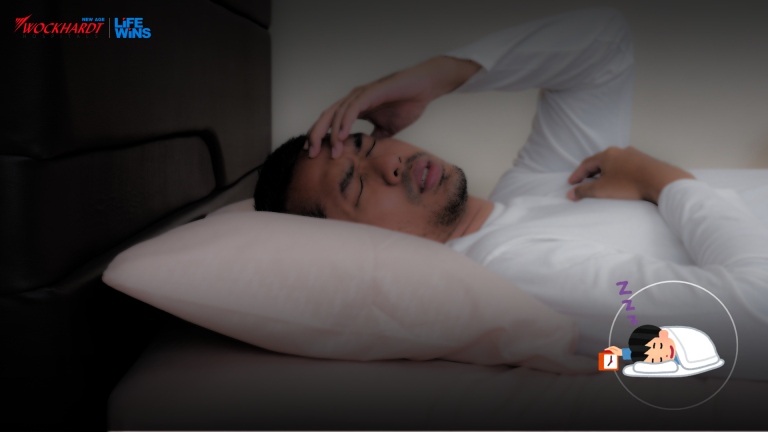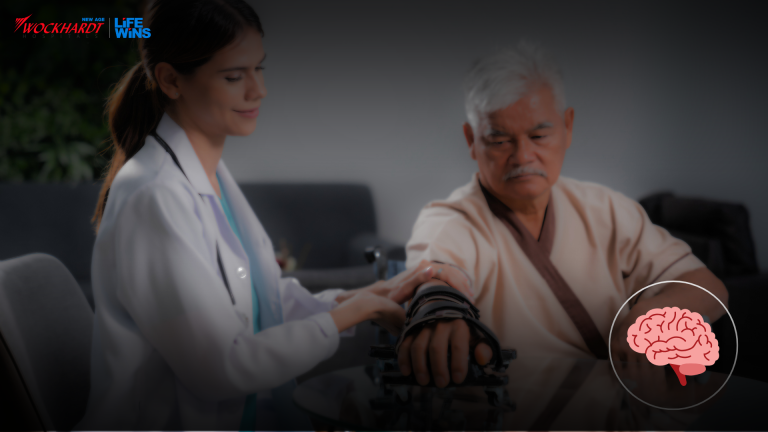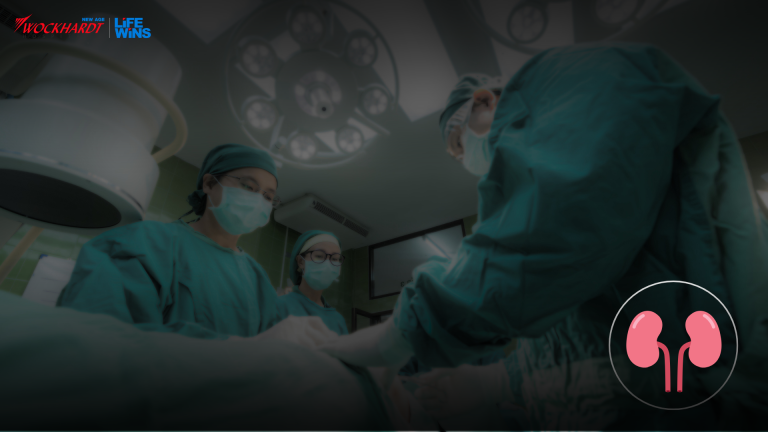Is Stevia A Good Alternative For Sugar? Hear From The Experts

Stevia is a natural sweetener that is associated with various health benefits. But it has some potential drawbacks. Stevia is a popular alternative to sugar, particularly used by people who have diabetes or poor blood sugar control. As it is extracted from the leaves of a plant, stevia is essentially calorie- and carb-free. Stevia has been linked to several health benefits, including weight loss, blood sugar management, and reduced risk of diabetes and heart disease, when used as a replacement for regular sugar. However, it has some potential drawbacks. Get to know more about the benefits and downsides of using stevia as a sugar substitute from the experts. “Studies have shown that stevia is reasonably safe. But still, most diabetologists do not recommend routine use of stevia as patients usually get acquainted with the sweetness and they tend to take sweeter substances when stevia is not available. So, stevia use should be minimized and avoid using it on a regular basis,” stated Dr. Dilip Gude, Consultant Physician, and Diabetologist. Use stevia in moderation Too much consumption of sugar or other sweeteners can give you tummy trouble, but stevia can be a good option, said Dr. Pritam Moon, consultant physician, and Diabetologist, Wockhardt Hospitals, Mira Road, Mumbai. He continued, “Stevia is a natural sweetener that is associated with various health benefits like lower blood sugar levels. Thus, it can be helpful for diabetic patients. Yes, that’s right! Stevia has fewer calories when compared to other sweeteners or sugar and will help in weight management. If you are on a weight-loss mission, then stevia is a good option for you. You can certainly make stevia a part of your diet as it is safe to consume and help those with diabetes and obesity.” But it is always a good idea to ask an expert before using it. “When you start using it, have it in moderation that is in the quantity suggested by the expert. Going overboard on it can lead to side effects like low blood pressure. So, be alert while using it,” Dr. Moon cautioned. Why do you want to substitute stevia for sugar? Dr. Kajal Pandya Yeptho, Chief Dietician, said that she personally would not advise the use of stevia unless the reason for substituting it with sugar is known. “Both stevia and sugar are taste enhancers. Sugar gives empty calories and stevia gives no calories. But the reason for replacing stevia for sugar is to be understood and in which food items as the associated food items will also provide calories. I personally would not advise unless the reason for substitution is known.” Some facts about stevia Stevia is extracted from the leaves of the Stevia rebaudiana plant. The leaves contain steviol glycoside molecules, which give stevia its sweet taste. The glycosides are known to be 250 300 times sweeter than regular sugar. Stevia sweeteners are made by extracting the glycosides from the leaves. With stevia sweeteners, very small amounts are needed to sweeten food or drinks. But you can also find many stevia products that contain additional ingredients, such as fillers, sugar alcohols, other sweeteners, and natural flavors. So, it is advisable to read the label and choose products that only contain 100 percent stevia extract. Dr. Pritam MoonConsultant Physician, and DiabetologistWockhardt Hospitals, Mira Road, Mumbai. Source: https://www.thehealthsite.com/fitness/diet/is-stevia-a-good-alternative-for-sugar-hear-from-the-experts-863186/
Challenges in TAVI surgeries in India
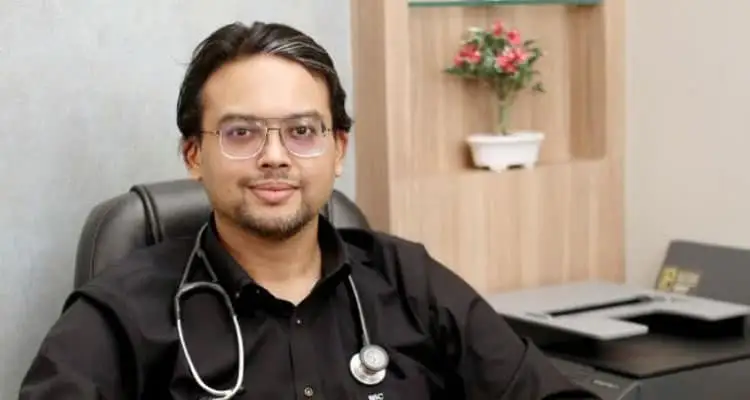
Transcatheter aortic valve implantation or TAVI is a new non-surgical procedure in which the aortic valve can be replaced without major open-heart surgery. Aortic valve is one of the four valves in the heart. This valve located on the left side of the heart facilitates the forward flow of oxygen-rich blood from the heart to the aorta and thereafter to other parts of the body. Degenerative Aortic stenosis is a disease of the elderly where the surgical risks would be prohibitively high. In this procedure, the valve is accessed through an artery in the leg. It’s a boon for the octa-nonagenarians who till now had to choose either to go in for a high-risk open-heart valve replacement surgery or a curtailed life. While this therapy is established as the standard of care in the west, there are few challenges for this therapy in India. For the TAVI procedure, there is knowledge, attitude, and practice gap because of which the procedure has failed to gain acceptance. TAVI is being used in the west for more than a decade and has undergone the rigors of carefully conducted medical trials and approval by the stringent USFDA norms. Large-scale trials have shown that TAVI is safer and more efficacious in a high-risk subset of patients. Recently, USFDA has given approval even for low-risk subsets after the result of a few landmark trials. Unfortunately, the knowledge of TAVI as an established form of treatment- even among medical colleagues is dismal. Most think of it as some sort of experimental procedure, which is not true. The procedure required specialized training, practice, and a qualified team of interventional cardiologists, anesthetists, and nurses. Even in a megapolis like Mumbai, a handful of interventional cardiologists are certified to do this procedure independently. The pandemic also played a role as many international proctors (Trainers) couldn’t travel to Mumbai. Likewise, Indian cardiologists couldn’t go abroad or have workshops in the country due to restrictions. But things are looking up now as more and more independent TAVI operators are growing in Mumbai and suburbs Another hindrance due to which the procedure has not found wider application is the cost. The average cost of the entire procedure ranges from 19 to 28 lakhs depending upon the valve used, the procedural fees levied by the surgeon, and the hospital setting. This makes TAVI out of reach of most Indians. Many insurance companies don’t provide cashless facilities or reimbursement for the entire cost of the procedure. The challenges are multiple but the gaps in further wider acceptance should be addressed to make it available to those who need it the most. Dr. Ankur Phaterpekar,Consultant Interventional Cardiologist ,Wockhardt Hospital Source: https://www.expresshealthcare.in/news/challenges-in-tavi-surgeries-in-india/433518/
Fight with Diabetes

There was a time when taking insulin every day was a very painful event in the day. But nowadays taking insulin has become an almost painless experience. So today we will try to answer a few common questions about how to use insulin if it has been prescribed by your clinician. On which part of the body, insulin should be taken? 1. Insulin can be taken on the abdomen. The outer side of the thighs and on the outer side of the shoulder also. But if it is being taken on the shoulder it is better to be given by someone else. Another important point is, it should never be taken around two inches of the navel. 2. In younger children it can be given on the upper parts of the hips also. Should we keep on changing the site of insulin and if yes, then how? Keep on changing the site of insulin makes it more effective. If one keeps on taking insulin at the same site then it leads to the accumulation of fat tissue on that site, which is called lipodystrophy. Taking the insulin on the lipodystrophy area leads to a lot of variation in its effectiveness. The easiest way of site rotation is to fix to take insulin on one part of the body at one time of the day and on another part of the body at another time of the day. Plus within the part also one should keep changing the point of injection every time. For example, one can fix to take insulin on the abdomen in the morning and to take on the thigh in the evening time. And within abdomen and thighs also he should keep on changing the point of injection every time as well. Should I shake the pen or insulin vial before taking insulin? There are different types of insulin. The insulin which are premixed formulations like 30/70, 50/50, or 25/75, look milky in color, and they need to be gently shaken and mixed before taking the insulin. How to take the insulin with the pen? There are very few simple steps to take insulin:- What happens if someone has dialed more than the required dose? If someone has dialed more than the desired dose, there is no need to worry, it can be dialed back to the desired dose. If one sees a drop of blood after removing the pen then what to do? It may happen sometimes when you see a drop of blood after removing the pen. It is not bothersome at all, Just take an alcohol swab and press that area for 2 minutes. After how many injections one should change the needle? Ideally, the insulin needle should be changed every time, but if someone wants to reuse it, the same needle can be used a maximum of 2 or 3 times only. Where should I keep the insulin which is in use? If someone injects very cold insulin it leads to pain but if we take insulin that is of room temperature it doesn’t cause pain. We can keep the in-use vial or cartridge at room temperature (<30 degrees Celsius) for up to four weeks. So we can keep the in-use insulin out of the refrigerator in cold weather for up to 4 weeks. But when it is a very hot season like May and June, then in use insulin should be kept in the refrigerator and it should be kept out of the refrigerator 30 minutes before the prick. Where should the extra insulin vials or cartridges be stored? The extra insulin vials or cartridges which are not in use, should always be stored in the refrigerator and to be kept at 4 to 8 degrees Celsius. It should never be kept in the freezer or chiller trey. Few Tips to take insulin in a painless way:- If one wants to take insulin in an almost painless way, he should keep these things in mind: There is no need to be scared of insulin. Nowadays it is very easier to take insulin and now it is even painless too. If we want we can defeat diabetes. Apart from lifestyle modifications, regular exercise, and medications, one should be investigated every year to detect diabetes complications early, especially considering the potential benefits of diabetes surgery. In wockhardt hospital. Mira road we have developed an entire diabetes body scan program. through which we can detect the complications at an early stage and treat them. We all can come together to defeat and diagnose diabetes. Dr. Jinendra JainMD (Internal Medicine), Fellowship in Diabetes.
World Cancer Day- Stage four cancers no longer a death sentence
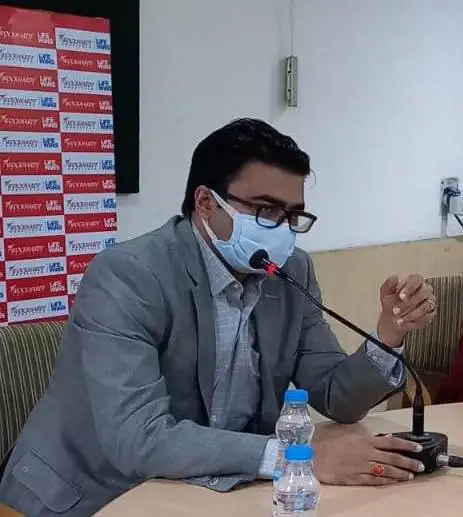
On the occasion of World Cancer Day, in order to spread awareness to the masses, Wockhardt Hospitals Nagpur conducted a Press Conference with Dr. Vaibhav Chaudhary, Consultant- Medical Oncology. In the conference, Dr. Chaudhary informed that cancer occurs in 4 stages, stages 1 to 3 are curable while stage 4 is often deemed incurable. Being a Medical Oncologist majority of his patients are stage 4. The field of cancer research has grown by leaps and bounds in the last 20 years. With the help of Targeted therapy, Immunotherapy, and oral metronomic chemotherapy this dreaded disease which was considered a death sentence is being converted into a chronic disease like diabetes or hypertension. At Wockhardt Hospitals, we treat cancer with a personalized approach. We specialize in treating very advanced cancers which have progressed on earlier treatment and have poor prognoses. We enlist a few stage 4 cancers who are living a near-normal life with personalized cancer therapy at our hospital. 1. Stage 4 Lung Cancer A 62-year-old lady was diagnosed with stage 4 lung cancer three and half years back with water in her lungs and difficulty in breathing. Her weight was just 40 kg due to cancer-associated weight loss. She was treated with double target therapy after testing for the target. She responded and the tumor disappeared with just 3 months of treatment. But the treatment needed to be continued just like the treatment of diabetes or hypertension or any chronic disease. As a result, the patient is absolutely fine today and living a normal life. Her weight has increased to 53 kg, still taking treatment and benefitting. 2. Stage 4 Ovary Cancer A 62-year-old lady was diagnosed with Stage 4 ovarian cancer 8 months back with bleeding and intestinal obstruction. The patient was having a very poor general condition and was unfit for Chemotherapy. She was given personalized treatment with Oral Metronomic Chemotherapy. She responded to treatment and her Cancer decreased from 15 cm to 2 cm over 4 months. She continues to take this treatment and is living a normal life without any complaints. 3. Stage 4 Larynx Cancer A 42-year-old man resident of Mumbai was diagnosed with Stage 4 larynx cancer in January 2021. Because of the aggressive nature and poor general condition of the patient, he was advised palliative care only in a Mumbai hospital. They came to Wockhardt hospitals and were started on targeted therapy and very low-dose chemotherapy. The patient had a very good response and continues to live a near-normal life with targeted therapy. All these cases reflect that Stage 4 cancer is not a death sentence and a normal life can be achieved with personalized cancer treatment just like any other chronic illness. Source: https://nagpurinfo.in/news/25765
Back Pain and Spinal Instability Causes and Treatment

INTRODUCTION PATHOPHYSIOLOGY INVESTIGATIONS NON SURGICAL TREATMENT SURGERY Message Young patients with spinal instability should opt for surgery as they completely recover and can resume all their personal and professional activities Dr. Niraj Kasat Consultant Joint Replacement Surgeon
Migraine In Children
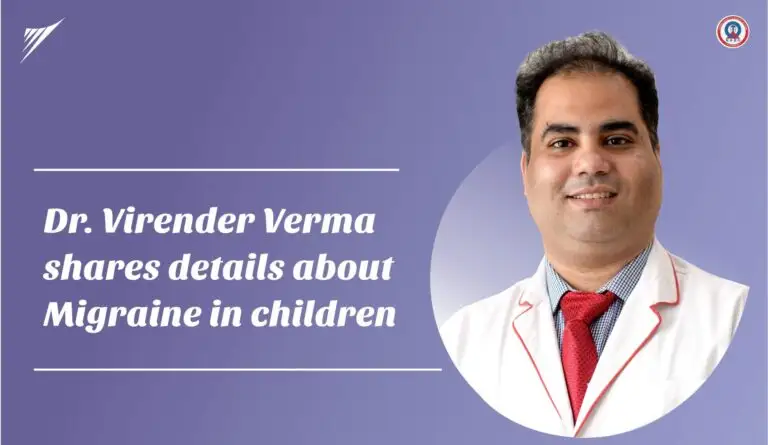
Migraine is a common disorder in children. 3.5-5% of children will experience recurrent headaches consistent with migraine. Q: What are the presentation and symptoms? Ans: The presentation is varied and varies according to patient age, as follows: Lab studies: Not indicated in Migraine but have a role in excluding other diseases. In any Headache three studies are vital. Q: What is the role of CT scan or MRI Ans: It is indicated only when the child is having an abnormal neurological examination, gaze-palsies, or examinations that suggest mass or tumor inside the cranial cavity. Q: Phases of Migraine: A migraine attack has 4 potential phases, as follows: 1. Prodrome is characterized by one or more of:- 2. Aura Only 10-20% of children with migraine experience an aura. The aura usually precedes the headache by less than 30 minutes and lasts for 5-20 minutes. Children are often unaware of their aura or are unable to describe it. Pictorial cards that illustrate typical visual auras may aid in obtaining an accurate history. Visual auras (which are often reported as moving or changing shapes) may consist of any of the following: 3. Headache Headaches can last 30 minutes to 48 hours but are usually less than 4 hours. Some young patients report headaches lasting 10-20 minutes. Childhood migraine headaches are often less severe than adult migraine headaches. During the headache phase, the migraineur may experience any of a range of associated symptoms, as follows: After the headache phase, the patient may feel either elated and energized or, more typically, exhausted and lethargic. This stage of migraine may last from hours to days. Q: How to treat? Ans: The first step in migraine treatment is to explain the disease to the child and the parents. The patient and parents benefit from a simple explanation of the headache pain and reassurance that it is not caused by a brain tumor or other life-threatening condition. A regular bedtime, strict meal schedules, and avoidance of overloading the child’s schedule with activities. Eliminating precipitating triggers reduces the frequency of headaches in some patients. A headache diary can be used to record unique triggers and features of the attack. During the attack, advise the child to lie down in a cool, dark, quiet room and go to sleep at the time of the attack. Sleep is the most potent antimigraine treatment. During a migrainous attack, a child commonly can be found resting in the fetal position with the affected side of the head down. Children should be given simple analgesics such as acetaminophen or ibuprofen. They should be taught to “give in” to their headache because the activity will probably aggravate their pain Other Medicines: There is a lot I am not discussing here because they must be started after consultation. Parents are to make a follow-up appointment with a doctor if the headaches worsen, if they do not respond to medications, or if adverse effects are intolerable. Several medication trials often are necessary before adequate headache control is achieved. Patients should have realistic expectations; while pharmacotherapy lessens the impact of migraine, it does not eliminate the cause which must be identified and treated accordingly. By Dr. Virender Verma Consultant Neonatologist Wockhardt Hospitals, Mira Road
World-Class Outcomes for Liver Patients in Vidarbha

In a bid to come up with world-class outcomes for liver patients in Vidarbha, Wockhardt Hospitals in Nagpur and South Asian Liver Institute have joined hands. South Asian Liver Institute has conducted more than 270 Liver transplants in Hyderabad and now aims to do the same in Vidarbha. With an experience of more than seventeen years in London Prof. Dr. Tom Cherian, Liver Transplant surgeon informed me that in case of liver failure, transplant is the only option. Dr. Cherian has been associated with King’s College, London, and more than 650 transplants with a success rate of 85-90%. “We are working to achieve the same rate in Vidarbha as well”, said Prof. Cherian Under this initiative, a separate fully resident team has been established which includes- Gastroenterologists, Critical Care experts, and trained doctors & nurses. A separate Liver ICU is also being planned for establishment. Since 2014-2016, Dr. Tom has done 7-8 transplants in Nagpur and all the operated patients are doing well. With a special interest in children with liver diseases, Dr. Cherian also feels that raising awareness in liver diseases is particularly because more than 50% of the liver gets spoiled before the symptoms start. He also spoke about the symptoms of the Liver failure which include: The early symptoms of liver failure are often similar to those of liver diseases and other conditions. Because of this, liver failure may be tough to diagnose at first. Early symptoms include: But as liver failure progresses, the symptoms become more serious, needing care right away. These symptoms include: In liver transplant surgery, the patient’s old liver is removed completely and a new one from a liver donor is put in the same place after joining the blood vessels and the bile duct. Liver failure can occur rapidly, in a matter of weeks (acute liver failure), or it can occur slowly over months and years (chronic liver failure). There are different causes for liver failure such as chronic viral infection with B and C virus, liver tumor, alcoholism, fatty liver, bile duct abnormalities (primary biliary cholangitis, primary sclerosing cholangitis, and biliary duct atresia). Hepatitis B and C are the two most common infections across the world. Luckily there is an effective vaccine for hepatitis B and cure by drugs for hepatitis C. Primary Liver Cancer develops in chronically diseased livers and sometimes develops rapidly so that no treatment is possible. If picked up on screening when the size is small, a liver transplant can cure these patients. Source: https://newstoday24x7.com/wockhardt-hospitals-nagpur-and-south-asian-liver-institute-join-hands-for-world-class-outcomes-for-liver-patients-in-vidarbha/
Habit Cough: Causes & Treatment
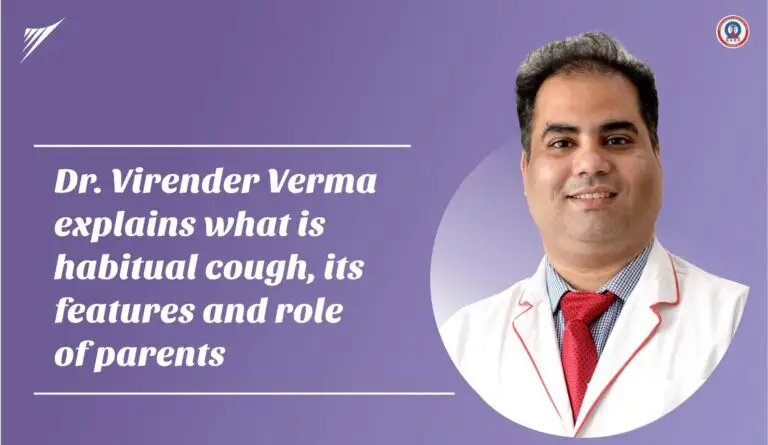
You must have encountered a simple but troublesome problem with your child. The kid keeps on coughing in small bouts, which are generally not severe but a cause of concern for the parents. The parent seeks medical advice multiple times. Fill the child with multiple cough syrups, expectorants, or antibiotics, but with little relief. What is a Habit Cough? It is a cough that occurs in the absence of any underlying disease. Most frequently it affects school-age children, usually those in the age group of 4-11yr. Causes of Habit Cough It is usually loud, harsh, honking, or barking. It may follow a viral illness, but go on for weeks, months, or even, in extreme cases, years. It can occur many times in a minute and often becomes more severe when other people, such as parents, teachers, and health care providers, are around. Even though the habit of cough can sound harsh, the child is quite comfortable between coughing bouts unless he has a conversion disorder. Classically, a habit of a cough only occurs when the child is awake. Habit cough is not associated with breathing difficulty or wheezing (musical sounds while breathing). A specific character about cough is that the parent of the child is either over concerned or they scold the child a lot. The child is generally a pampered one. Treatment Plan and Role of Parents By Dr. Virender Verma Consultant Neonatologist Wockhardt Hospitals, Mira Road
Pandemic to endemic, people have to adapt to a new reality, say doctors
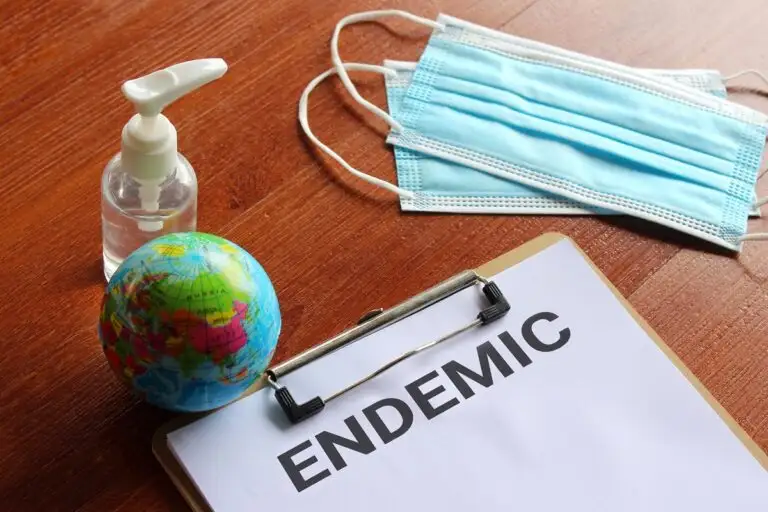
While billions got affected by this deadly virus, more than five million have lost their lives. Even after two years since this novel coronavirus first started impacting human lives, Covid-19 crisis is far from over. While this virus is in no mood to leave us anytime soon, doctors are suggesting how to stay cautious, and learn to live with these conditions. Europe is set to relax all restrictions imposed since January 2020, and want people to get accustomed to the changing environment. People in India too will have to accept the fact that Covid-19 is now an endemic, and it is like any other coronavirus or flu which causes various ailments in all age groups. Commenting on the changing scenario, Dr. Rohith Reddy Pathuri, said that there is too much uncertainty about what shape and form the coronavirus will take with time. “Will it impact more people or less, a new variant will be more fatal or less, how many more mutations will we come across, have we acquired immunity against this virus; nothing is certain. While we doctors are still monitoring the traits of the Covid-19 virus, it is important people continue to stay cautious, and ensure they follow all necessary safety protocols before we are fully out of this problem,” he said. “Businesses cannot remain closed, people must step out to earn a living, students must attend physical classes for better academic progression, the world must move on. While we are worried about the continuing risk, it is also important people will have to step out for economic and livelihood reasons. Hence, it is important people follow necessary safety protocols and ensure they do not expose themselves to viruses easily,” said Dr. S. Ravindra Kumar. According to Dr. Sudhir Prasad, Consultant – the world is witnessing a phase of transition and might have to start reacting a little differently to the changing times. “Our behavior too will have to change from the past two years, because we will be more mobile for professional or economic reasons and will start interacting with others more frequently. According to Google, people started searching for the term “endemic” and want to understand what it means and how it is going to impact their lives. No educational institution or business establishment can remain shut forever, hence it is important people adapt to the changing scenario and start living with the challenges.” “Across Metro cities and in rural locations, the number of deaths due to Covid-19 infection has reduced over the last couple of months. While the Omicron variant led to a drastic increase in the number of cases in India, and around the World; the medical fraternity is widely debating the risk associated with it. Because we do not see a radical rise in the number of deaths caused due to novel coronavirus, it is widely accepted that this new variant might not be as dangerous. Hence, people can start leading their normal lives, attend work, and academic sessions. But continue to stay cautious,” concluded Dr. Mohd Vaseem. “Attending school is an important element in the overall evolution of a child! Covid-19 has kept students away from their classrooms for two academic years, and quite a few might have not interacted well with their friends. All this is likely to have a bearing on the mental health of children. It is important parents accept the fact that this virus might not leave us all anytime soon, hence stay cautious, follow Covid appropriate behavior and send their children to schools for better academic and mental development,” said Dr. Mahesh Sarda, Consultant- Internal Medicine and Critical Care, Wockhardt Hospitals, Nagpur. Spain, the United Kingdom are relaxing Covid-19 restrictions, and a few more European nations are even relaxing the mandatory wearing of mask norm to optional. The United States which witnessed a maximum number of infections and deaths over the past two years too might fully relax restrictions. Considering these changing times, India cannot stay behind and will have to catch up with the emerging trends. So, the best people can do is to practice self-discipline in following safety protocols, wearing masks and where possible social distancing, and moving towards leading lives normally. Source: https://www.newkerala.com/news/2022/11927.htm
Covaxin is Safe for Pregnant Women
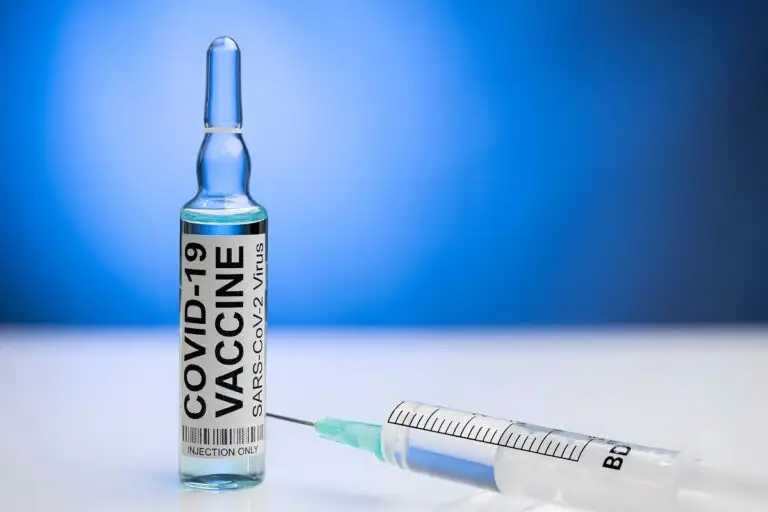
India reported 2.38 lakh fresh COVID cases over the past 24 hours, 7 per cent lower than yesterday. The positivity rate dropped from 19.65 per cent to 14.43 per cent. According to scientists, the way to retard the curve completely will be to ensure vaccination (primary doses) for all and a healthy seropositivity rate. Although India has amped up vaccination across all eligible age groups, there is still a significant proportion of the population that hasn’t received even a single dose and is most vulnerable to catching an infection. As per government data, only 2.78 crore doses have been administered to pregnant women — 1.59 crore have got the first dose and 1.19 crore have taken both doses — as of January 15. “There are sporadic data available on vaccination among the pregnant population. The last state-wise data that is available in the public domain dates back to September-October 2021. We need to vaccinate this group urgently as they are also in the high-risk category to catch the infection and develop complications if not tended to. We don’t have data on the impact of this latest Omicron surge on pregnant women, but in my clinic, the calls have increased. My patients are hesitant of getting vaccinated as they fear the fever could cause havoc with their unborn,” Dr. Mithee Bhanot, told News9. Out of 12 expecting mothers, she has three patients in their second trimester who are suffering from mild symptoms of COVID. “They are under home isolation and their condition is being monitored very carefully. One out of the three is fully vaccinated yet had a breakthrough infection. The rest of my patients are being advised to take their primary dose at the earliest,” she said. In Delhi, around 2 lakh pregnant women and lactating mothers have received their vaccination and the state government has also decided to deploy ASHA and Anganwadi workers to create awareness and encourage those left to get the COVID vaccine at the earliest. When is the Best Time to Take a Primary Dose? Due to the absence of data and studies around pregnancy and SARS CoV 2, doctors say it is difficult to pinpoint what is the best time but they agree that ideally the first trimester should be avoided for any dose of the vaccine. “It is very important to get your vaccination – both doses. We tell pregnant women who are in their first trimester to wait to get their vaccine since the foetus is still in the development stage. But as soon as the organogenesis is complete, it is advisable for all pregnant women to take the vaccine – be it Covishield or Covaxin. If there has been a history of blood clots in the past, we recommend that they go for Covaxin. COVID appropriate behaviour needs to be followed strictly like washing of hands, wearing a mask when someone comes to visit, self-isolating as much as possible (especially during waves like this) and it is important to get all family members tested for COVID, even if they are asymptomatic. We know this Omicron variant is highly infectious and maybe in community transmission but for pregnant women, we are looking at complete prevention of the disease rather than halting the severity,” Dr Gandhali Deorukhkar, a consultant of Obstetrics and Gynaecology at the Wockhardt Hospital in Mumbai, said. Agrees Dr Sharmila Solanki, “If the first trimester is over, get jabbed with both doses as soon as possible. The vaccine may not give you 100 per cent protection against the variant but it will not let the disease develop into something serious. It’s best for the woman and her unborn,” she added. On Foetus Getting Antibodies Too Gynaecologists say it has to be impressed upon women that there are absolutely no harmful side effects of the vaccination. Even fever that is caused due to immunization is not a reason for worry. “The other thing to remind moms-to-be is that the vaccination will not only protect them from the severity of the Omicron/Delta variant but will also protect the foetus to a great extent. Getting both doses is a must and we haven’t seen any major reaction to the vaccine even when it has been taken in the third trimester,” Dr Birbala Rai. About 90 per cent of pregnant ladies on her list are vaccinated. “For the rest, we are in the process of counselling them to get the jab. Family pressure and rumours are keeping them away like complications during delivery or the baby being stillborn. But these are unfounded rumours,” she clarifies. According to her, whatever antibodies the pregnant woman is developing the same goes for the foetus. “There is vertical transmission of antibodies. That is the basic purpose of giving those jabs in the first place when the woman gets pregnant. We are protecting the foetus from developing serious diseases. The same is true for lactating mothers. Through mother’s milk, antibodies are supposed to get transmitted to the baby,” Solanki tells you. On Reasons why Women are Hesitating to Get Vaccinated There are several, says Deorukhkar. “Basic education on the impact of COVID during pregnancy is missing. There are many questions that are unanswered. Most people feel that if they are pregnant and get a vaccination, they will have a miscarriage. This is far from true. Studies have shown that vaccination has no bearing on miscarriages. In fact, getting vaccinated will prevent the mother from getting the virus or at least prevent hospital admission during the ongoing COVID surge,” she reiterated. Should One Avoid Pregnancy if Tested Positive for COVID? “To plan a pregnancy is a family decision. In the first wave and the second, we didn’t have much information about the virus. But today, we are better prepared. We have seen two waves and there is so much more that we know about COVID-19 – about the disease, the symptoms and the complications of not taking the jab,” Birbala says, adding that every virologist is stressing the fact that










